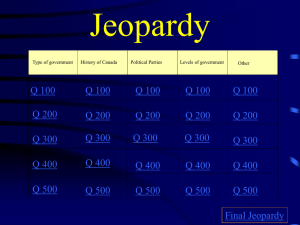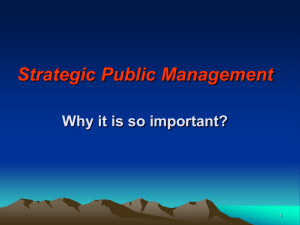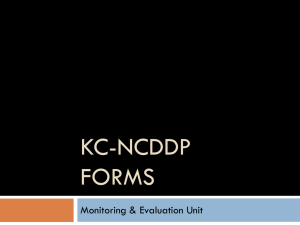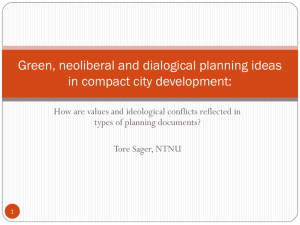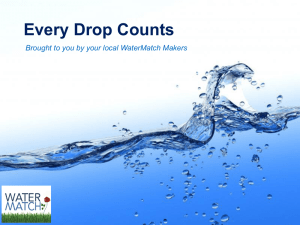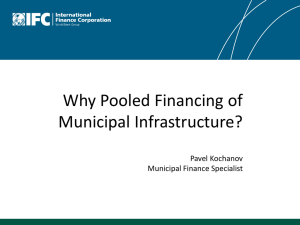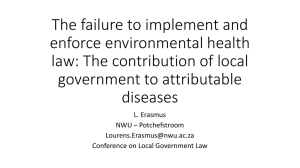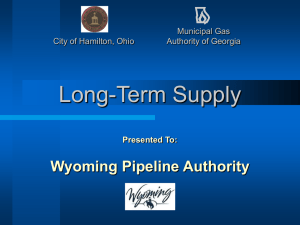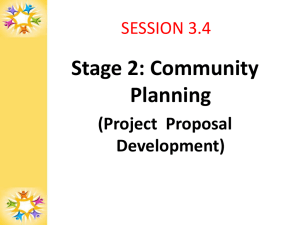3.3a_Municipal Orientation
advertisement
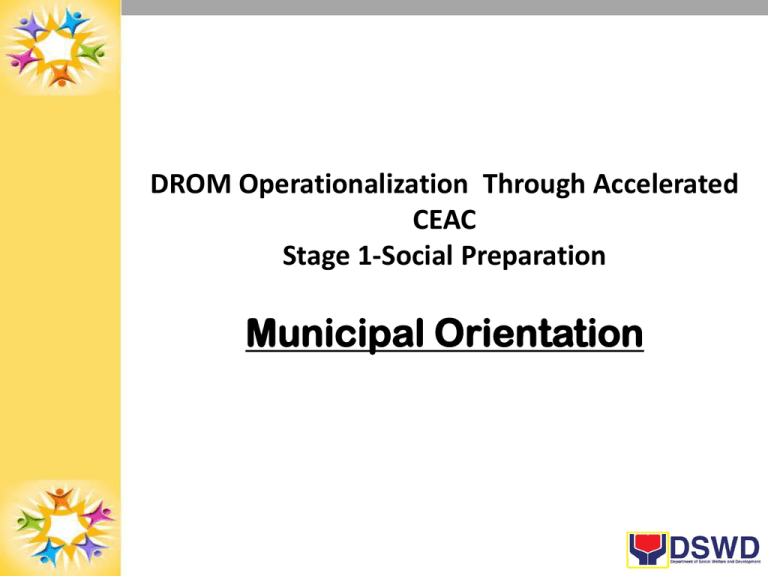
DROM Operationalization Through Accelerated CEAC Stage 1-Social Preparation Municipal Orientation Major Steps in Municipal Orientation A. Preparatory 1. RPMO gathers data on DANA, matrix of LGU & NGA Programs, Projects, and Activities (PPA) to address early recovery and rehabilitation needs, geo-hazard maps, & other relevant information. 2. Copy of the DANA, matrix of LGU,NGA PPAs, and hazard maps are provided to the ACTs. 3. ACT, RPMO) and/or SRPMO staff, meets with the Mayor & MLGU staff prior to the orientation to plan for the MO. 4. AC ensures the resolutions and other enrolment documents are complete. Major Steps in Municipal Orientation B. Actual MO 1. RPMO and/or SRPMO present and discuss an overview of NCDDP, & DROM 2. Reactions, questions & recommendations of participants are solicited and addressed by the RPMO/SRPMO and the MLGU. 3. Role of DSWD is explained, & ACT is introduced. 4. Mayor acknowledges the ACT, and expresses commitment to support the Program in behalf of the municipality. 5. MOA is formally signed Major Steps in Municipal Orientation B. Actual MO 6. Following resolutions are passed (i) Convening a consultation meeting on disaster impact and barangay ranking and allocation, and; (ii) Forming (in new areas) or Reactivating (in old areas) the MIAC, and the MCT; (iii) GRS is explained, and a resolution forming a municipal GC composed of representatives of barangay GC is passed. 7. Meeting is closed. Grievance Redress System • system for community to address and resolve grievances arising from the Project • system is made functional by the Grievance Committee elected from among the community residents using agreed criteria • special BAs can be called from time to time to hear and resolve grievances Major Steps in Municipal Orientation C. After MO 1. Community Empowerment Facilitators (CEFs) meet with the chairpersons of their assigned barangays to schedule field visits and consultations in preparation for the community assembly. 2. AC gathers the resolutions and files them at the ACT office. Stakeholders Involved in Municipal Orientation 1. Municipal Mayor 2. SB members esp. Vice Mayor & Chairpersons for Social Welfare & Appropriations 3. LGU department heads & relevant staff 4. Barangay Captains & their Councillors 5. NGA representatives 6. Representatives from CSOs, NGOs, CBOs, and POs 7. MIAC and MDRRMC members 8. In old KC areas, BRT, CVs, BSPMC chairpersons, and O&M group chairpersons Stakeholders Involved in Municipal Orientation 9. Project team: Regional Director (RD) Regional Project Manager (RPM) Regional Project Management Team (RPMT) ACTs Roles/Involvement of ACT in Municipal Orientation A. Preparatory 1. ACTs are in charge with preparation activities 2. Copy of the DANA, matrix of LGU-NGA PPAs, and hazard maps are provided to the ACTs. 3. ACT, accompanied by RPMO and/or the SRPMO staff, meets with the Mayor and MLGU staff prior to the orientation, to plan for the MO. 4. AC ensures the resolutions and other enrolment documents are complete. Roles/Involvement of ACT in Municipal Orientation B. Actual MO 1. Role of DSWD is explained, and the ACT is introduced. 2. Mayor acknowledges the ACT, Roles/Involvement of ACT in Municipal Orientation C. After MO 1. Community Empowerment Facilitators (CEFs) meet with the chairpersons of their assigned barangays to schedule field visits and consultations in preparation for the community assembly. 2. AC gathers the resolutions and files the same at the ACT office. Key Decisions in Municipal Orientation 1. LGU gives formal authority for barangay roll-out. 2. Municipal Mayor agrees that: a. MLGU programs, plans, activities, and budgets to address early recovery and rehabilitation will be reviewed b. NGA PPAs will be aligned with local needs, and; c. subjected to validation by the community Outputs of Municipal Orientation 1. Municipal MOA on KC-NCDDP is signed. 2. Selection criteria for most affected barangays are shared and discussed with the municipality. 3. Agreement is reached to: a. convene consultation meeting b. Gather and consolidate the DANA and other relevant rehab and recovery plans and updates c. prioritize barangays for support, Outputs of Municipal Orientation d. prepare matrix of early recovery and rehabilitation needs for consultation with communities which have been met, have commitments for support, and have currently been unmet, 4. Resolution is passed a. Forming the MIAC (in new areas), and identifying and designating its members, Outputs of Municipal Orientation b. Forming the MCT (in new areas) and designating its members. c. Forming a Municipal GC composed of representatives of barangay GC Tools & Forms for Municipal Orientation 1. 2. 3. 4. 5. 6. 7. 8. 9. Activity Checklist DANA Matrix of NGA PPAs Geo-hazard Maps from the MLGU MOA template Resolution template Activity Report Form Attendance Sheets Standard agenda, presentations, activity program and materials. Standards in Municipal Orientation 1. Only RPMO representatives deliver the orientation. 2. ACTs are in charge with preparation activities. 3. Mayor is present and convenes the meeting. 4. Vice-mayor, as head of the SB, and the SB chairpersons for social welfare and appropriations attend the meeting. 5. CSO representatives to the MDRRMC, MDC and/or the LPRAT are present. Standards in Municipal Orientation 6. Vulnerable groups (women, Indigenous People (IP), communities in geographically isolated and depressed areas (GIDA), Pantawid Pamilya HHs, and Conflict-Affected Areas (CAAs) are represented. 7. IP groups must be represented by tribal leaders. Standards in Municipal Orientation 8. Criteria in selecting the most affected barangays for NCDDP support are discussed as part of the overview of the NCDDP; population of the barangay; poverty incidence, and; damage-affected HHs. 9. Reactions to the presentation on the NCDDP are solicited, questions are adequately answered, and recommendations discussed. Standards in Municipal Orientation 10. Where needed, separate meetings are conducted for women to solicit reactions, questions, and recommendations. 11. In municipalities which cover, either in whole or in part, a known ancestral domain, separate consultations are likewise conducted with all IP tribes. 12. Activity Reports and other documents are submitted within 7 days after the activity. CEAC Key Principles to be Operationalized Starting from Social Preparation • • • • Participation, Accountability, Inclusion, and Transparency Key Message 1 Social Preparation Stage sets the foundation and tone for active participation of various stakeholders in KC-NCDDP and requires thorough preparation of staff and the community. Key Message 2 Good social preparation requires people meeting people. Key Message 3 Alignment of ACTs’ efficacy skills and lifestyle and community values to CEAC key principles is essential in KC-NCDDP implementation.
